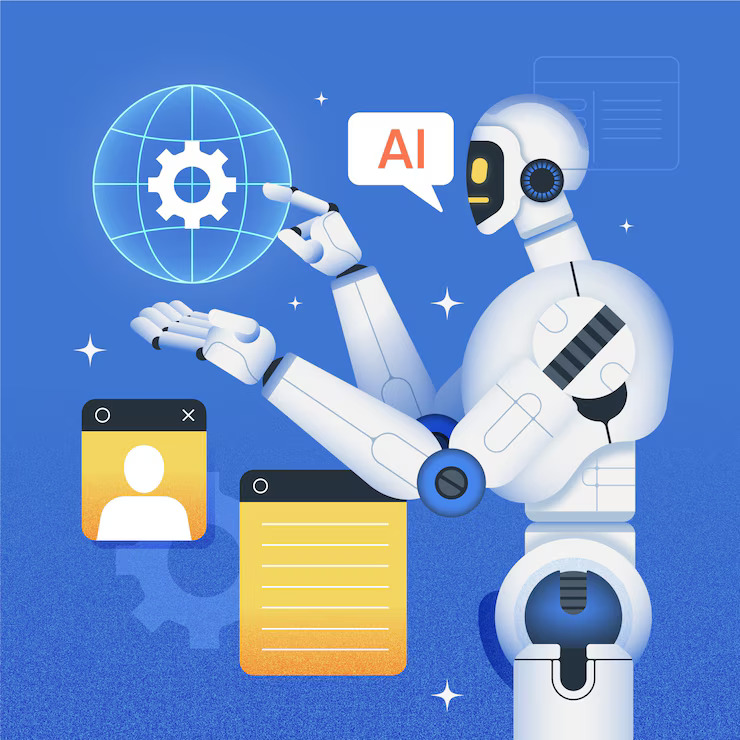Artificial intelligence (AI) has enormous potential to revolutionize industries and reshape how humans work and live. However, with such significant impacts come the need for effective governance practices to ensure AI technologies are developed, deployed, and used responsibly. AI governance addresses ethical standards, transparency, accountability, and fairness. This article explores what AI governance is, why it’s needed, and fundamental principles and strategies for fostering the responsible use of AI ecosystems.
What is AI Governance?
AI governance is a collection of frameworks, policies, and best practices designed to ensure AI technologies are developed and used in ways that minimize risks and maximize benefits. It encompasses the entire lifecycle of AI systems, addressing aspects such as:
- AI algorithms and decision-making processes
- Data privacy and security
- Economic and social impacts
Key Components of AI Governance
- Ethical Guidelines: Ensures AI is developed and used in ways that align with human values.
- Transparency and Accountability: Promotes clear and understandable AI systems.
- Data Privacy and Security: Protects individuals’ data and ensures compliance with laws.
- Risk Management: Identifies and mitigates potential risks associated with AI.
Why is AI Governance Needed?
Effective AI governance is essential for several reasons:
Respecting Ethical and Moral Considerations
- Bias and Fairness: AI systems can introduce biases that unfairly disadvantage certain groups. AI governance ensures these systems are implemented fairly and transparently.
- Human Rights: Ensures AI respects individual rights and aligns with societal values.
Complying with Legal and Regulatory Requirements
- Regulations: Governments worldwide are focusing on AI-specific regulations. AI governance helps organizations comply with these evolving laws.
- Data Security: Ensures the protection of personal data in accordance with privacy laws.
Managing Risk
- Trust and Transparency: AI algorithms can be opaque, making it hard to understand their decision-making processes. AI governance promotes transparency, helping build trust with stakeholders.
- Skill Erosion: Prevents overreliance on AI, ensuring human skills are maintained.
Maintaining Trust
- Explainability: AI governance requires organizations to explain how their AI systems work, including data sources and algorithms used. This fosters greater trust among employees, customers, and community stakeholders.
AI Governance Best Practices
Implementing best practices is crucial for effective AI governance. Here are five foundational best practices:
1. Building Internal Governance Structures
- Working Groups: Form groups of AI experts, business leaders, and key stakeholders to craft AI policies.
- Roles and Responsibilities: Define who is responsible for various aspects of AI governance.
- Accountability: Ensure clear accountability for AI outcomes.
2. Engaging Stakeholders
- Transparent Communication: Explain how AI works and its impact to employees, users, investors, and community members.
- Formal Policies: Develop policies for regular stakeholder engagement.
3. Evaluating AI’s Human Impact
- Privacy and Autonomy: Respect individuals’ rights and avoid discrimination.
- Risk Management: Mitigate risks from poor quality data and lack of diversity in development teams.
4. Managing AI Models
- Continuous Monitoring: Regularly test and update AI models to prevent degradation.
- Model Refreshes: Ensure AI systems perform as intended over time.
5. Addressing Data Governance and Security
- Data Quality: Ensure high-quality, diverse training data.
- Security Measures: Protect data from breaches and misuse.
AI Governance Tools and Examples
AI Governance Tools
- Data Management Platforms: Tools like Snowflake for managing data securely.
- AI Auditing Tools: Tools to audit AI algorithms and ensure compliance with governance standards.
- Transparency Tools: Platforms that provide insights into how AI models make decisions.
AI Governance Examples
- Google’s AI Principles: Google has established AI principles that guide their development and use of AI technologies.
- Microsoft’s AI Governance Framework: Microsoft uses a framework that includes transparency, accountability, and fairness to govern their AI systems.
AI Governance Benefits
| Benefit | Description |
|---|---|
| Ethical Considerations | Ensures AI aligns with human values and reduces bias |
| Legal Compliance | Helps organizations comply with evolving AI regulations |
| Risk Management | Identifies and mitigates risks associated with AI |
| Transparency | Promotes understanding of AI systems among stakeholders |
| Trust Building | Enhances trust through explainability and accountability |
Conclusion
AI governance is critical for ensuring that AI technologies are developed and used responsibly. By following best practices and utilizing effective tools, organizations can address the ethical, legal, and societal implications of AI, fostering trust and maximizing benefits. As AI continues to evolve, so too must our approaches to governance, ensuring a future where AI works for the betterment of all.



